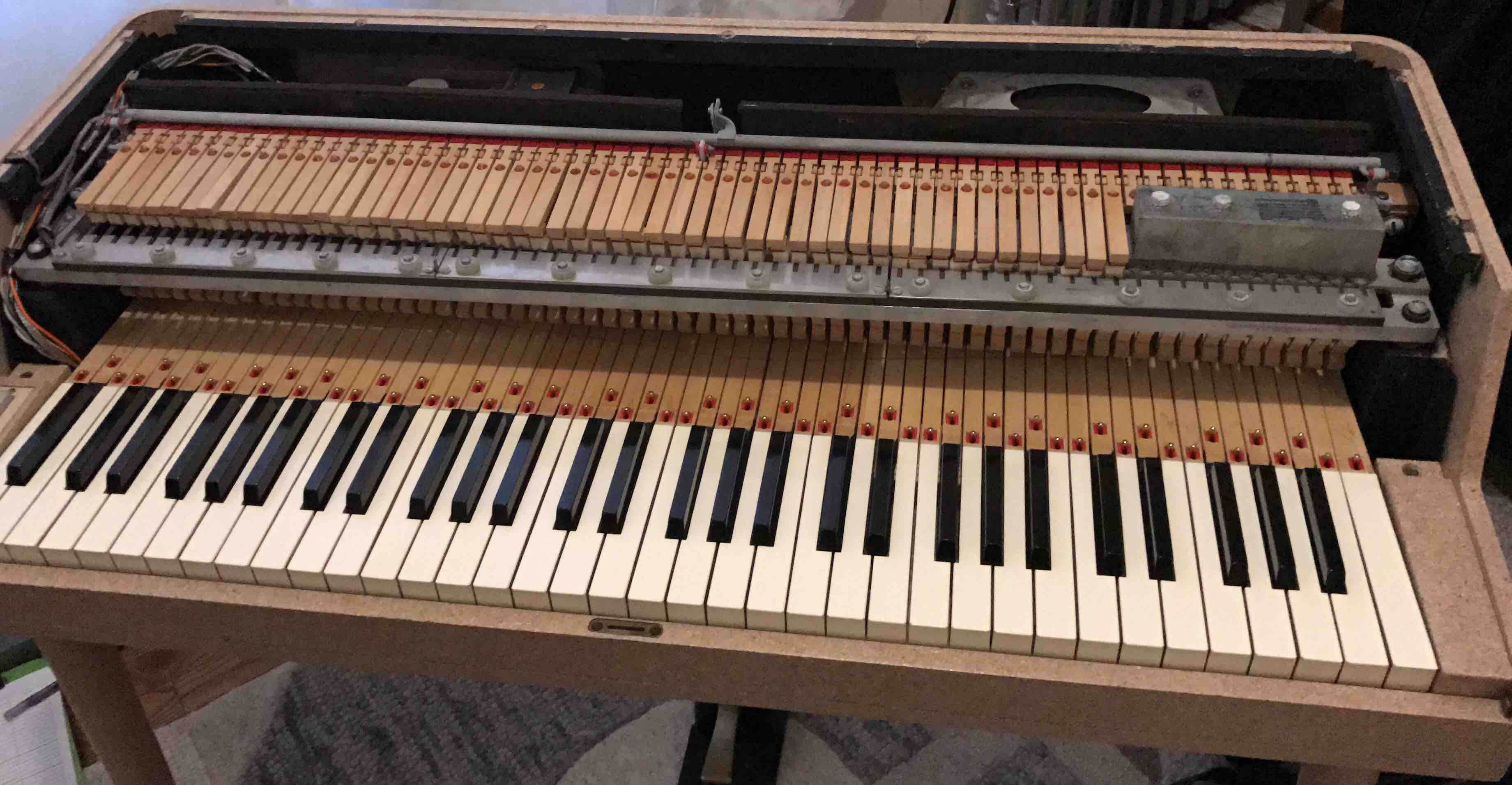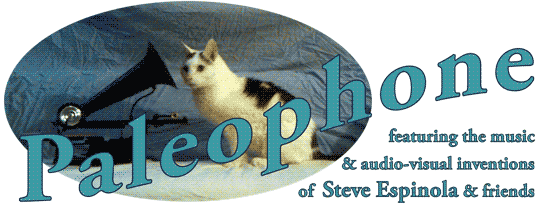Note: This is a legacy version of this page, which will be removed once Google catches up to Steve’s new Wurlitzer EP Repair site, DocWurly.com. The new version of this page is here.
 See Steve’s unprecedented online list of every model of Wurlitzer Electronic Piano ever produced, 1954-1983.
See Steve’s unprecedented online list of every model of Wurlitzer Electronic Piano ever produced, 1954-1983.
See the brand new Testimonials page: Here.
Steve Espinola will service your Wurlitzer Electric Piano and restore it to full functionality. He makes house calls (and stage calls) in the greater New York City area. He has 25 years of experience playing and repairing them.
He will tune, voice, and/or replace the faulty reeds in your Wurlitzer Electric Piano. He will also regulate the action so it plays smoothly, and generally restore it to health and a dynamic, expressive musicality. (Reeds must be pre-ordered for models earlier than the 140A/145A/720A, and the complicated 1950s models will require drop-off at his studio in Brooklyn).
If you have one of these, you know they are among the most expressive and beautiful sounding keyboards on the planet. No two sound alike; they each have personalities, and positive unpredictabilities, which can’t be rendered on even the best sampling keyboards. They can play funky, rocking, sweet and tender, in equal measure.
They can also be also terribly finicky beasts. At best, they have always required skill to maintain. Add to that, the oldest of these are over 60 years of age; the newest were made 33 years ago. It is a measure of the care that went into their design, and the love that tends to be shown towards them, that they still work at all, after decades of use. That said, much like a vintage car, they tend to require some special attention to undo the entropic forces of time, wear, travel, accident, and occasional outright misuse and abuse.
The hammer and action of each key is very similar to that of an upright piano, and will slowly, over decades, go “out” from the normal weathering effects of temperature, humidity, gravity, and use. The small, steel tone-producing reeds must be tuned by repeated trial and error, by adding or filing bits of solder off the end of the reed. Eventually, over decades of use, the metal fatigues or snaps on some reeds, and these must be replaced. This can be a more time-consuming process than the tuning of individual piano strings; but the pitch of an individual Wurlitzer EP note should hold far longer, if the process is done correctly, than that of a piano string, due to differences in instrument design. There is nothing like these instruments, and they will more than return the investment you put into them.
At this point, as well, the amplifiers of even the later, best-maintained models are starting to show unwelcome noise and crossover distortion. Many calls begin with a blown fuse or two that needs replacement. Steve will do simpler electronics repairs, and talk you through options if more complex electronic work is required.
Be aware that all 1950s models (110, 111, 112, 112A, 120 and 700) have design features that makes tuning and repairing them much more time-consuming, and therefore more expensive. This can also be true of early 1960s, pre-140B models as well, to a lesser degree. They are wonderful when restored, but it is wise to understand what you are investing in before buying one.
Call Steve and get a quote on getting your Wurlitzer Electric Piano up to speed: 347-619-2464. You can also email him at SteveEspinola@gmail.com, though phone is preferred. (Leaving notes on this page, in the comments section, is not an efficient way to reach Steve, as they may get buried in spam messages.)
Steve ends up taking a lot of long-distance diagnostic phone calls and emails; in addition, he offers his unique Wurlitzer EP Model Feature Chart free of charge. PayPal gratuities for such sharing of data and diagnostics are always welcome, and support further research. It’s the circle of life! Click the golden “Thank$” button, below, if so inspired.
Please note: A Wurlitzer Electronic Piano is not to be confused with a Wurlitzer acoustic piano, A Wurlitzer player piano, A Wurlitzer organ, or a Wurlitzer coin-operated jukebox. Steve does not repair any of those.

Love your site. I have been reading and learning a lot about a special piano I have come to own. It is a 140B with the battery pack plug and sustain peddle. I sadly admit I do not play but heard someone play it and it sounds incredible. However, two keys have a “dead” sound. I buy and sell things and would love to have it fixed to playing condition to assist in reselling the piano (not fully restored). I don’t mind investing something if the payoff is there. Can you provide any advice as to if it is worth it or not to have you look. I am located 60 minutes from the George Washington Bridge…straight run on Route 80W.
I’m sorry I missed this comment! I am very happy to help. Please call me at 347-619-2464.
I have a wurlizter 200a I believe mid 70s. It has an F key that just dropped off the map, everything else still sounds in order. Would like to have this resolved asap as i play this thing every day.
Check your email, hope to help. 347-619-2464
Hello Steve i have a wurli that needs some TLC and was wondering if you can help. Email me. Thanks
Good chatting, looking forward to giving it some help!
Looking to have a Wurlitzer Jukebox serviced. I see you mostly dealt with player pianos. Do you have any knowledge of someone who could service a jukebox? Any information is appreciated. THank you.
I wish I did. I get a lot of questions about this. But those are entirely different animals than electric (not player, btw) pianos.
I may purchase a 200a that apparently needs to be tuned.
how much does that cost? and Im in bushwick, would you do it or do you not work in this area?
TY?
how much is this board worth if it’s in decent condition, but the tuning problem?
CHRIS!
I emailed you. Call me!